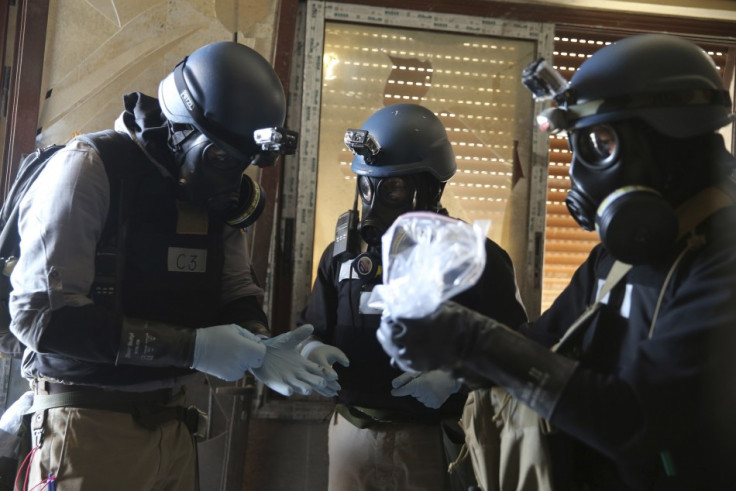Bashar al-Assad: 'No Doubt' Syrian President Behind Ghouta Gas Attack [VIDEO]
UK, US and France seize on UN report as conclusive evidence that Syrian regime used sarin in Ghouta attack

A UN report confirming that poison gas was used against civilians in the Ghouta region has left little doubt that the Assad regime was to blame for the most significant use of chemical weapons since the assault on Halabja by Saddam Hussein in 1988, according to diplomats and experts.
UN inspectors said there was "overwhelming and indisputable" evidence that surface-to-surface rockets carried toxic sarin gas in the August bombardment of the Damascus suburb of Ghouta which led to the deaths of 1,400 people.
The UN report did not say who was responsible for the attack. But foreign secretary William Hague said that in the light of the report it was "abundantly clear" that the Syrian regime was the only party responsible for it.
He offered to send chemical weapons experts to Syria to help eliminate its stockpiles.
US ambassador to the UN Samantha Power said: "The technical details of the UN report make clear that only the regime could have carried out this large-scale chemical weapons attack."
The 122mm rockets cited in the report, according to Power, were previously linked to government forces.
The report stated that the chemical attack was particularly deadly because of the weather conditions on the day. It took place very early in the morning, when low temperatures maximised the impact of chemical weapons as the heavy gas stayed close to the ground and infiltrated lower levels of buildings where people were hiding.
Chemical poisoning
Inspectors identified at least 80 people who showed signs of chemical poisoning including constricted pupils, vomiting, dizziness and loss of consciousness. Despite having only a few hours to do the job, inspectors interviewed more than 50 survivors, medical personnel and people who were first at the scene.
Some of the victims were still confused or disoriented seven days after the attack. Even first responders became ill, with one having symptoms of blurred vision, bodily weakness, shaking and loss of consciousness, said the report.
The vast majority of blood samples tested - 85% - tested positive for sarin. The UN team also analysed impact sites and munitions and collected 30 soil and environmental samples.
Almost all the rockets or rocket fragments were confirmed as having contained sarin.
The team found an impact crater in Moademiyah and a rocket engine nearby marked with Cyrillic letters - the alphabet of Russia.
The casing of a 330 mm rocket was found by inspectors who calculated its trajectory as coming from east-southeast.
French foreign minister Laurent Fabius said that the trajectory of the missiless, among other evidence, left "no doubt" as to the origin of the attack.
New-York based Human Rights Watch reported that the Soviet Union had delivered several 140mm rockets and hundreds of rocket launchers to Syria.
Secretary-general Ban Ki-moon said that the mission had been unable to verify the number of casualties.
"This is the most significant confirmed use of chemical weapons against civilians since Saddam Hussein used them in Halabja in 1988," he said.
British blogger Eliot Higgins, who has written extensively on the chemical weapons attack in his Brown Moses blog, said: "This is the evidence that the Syrian government was capable of the attack, and had a history of using the munitions linked to the attack. As for evidence of Syrian opposition responsibility, that appears rather thin on the ground.
"It seems to me that compared to the evidence of government responsibility for the attacks, the evidence of opposition responsibility seems very poor," he wrote.
© Copyright IBTimes 2025. All rights reserved.






















